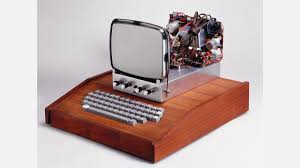It’s been a consistent trend through the past few months: the rapid evolution of Windows PCs. Interestingly, this evolution has been almost entirely hardware-centric. The potential for broader relevance and utility is expanding as new form factors emerge. From dual screens to augmented reality (AR) headsets, the landscape of computing is undergoing a significant transformation. While Microsoft’s software innovations, particularly with Windows 11, appear stagnant, PC makers are driving this hardware revolution. This article delves into how these changes are shaping the future of personal computing.
The Shift in Form Factors
From Convertibles to Dual Screens
The journey began with convertibles, which promised a tablet-esque experience. However, that promise has not held much ground. Instead, dual screens have taken the spotlight, offering unprecedented convenience and functionality. Devices like the Microsoft Surface Duo and ASUS ZenBook Duo exemplify this shift, enhancing multitasking and productivity.
The Role of Augmented Reality
Augmented reality headsets are introducing a screen-free dimension to computing. These devices, like Microsoft’s HoloLens, allow users to interact with digital content in a physical space, blending the virtual and real worlds seamlessly. This innovation paves the way for new applications in fields ranging from education to healthcare.
The Pursuit of Slimmer Laptops
Advances in Design and Technology
The quest for slimmer, more portable laptops continues unabated. Manufacturers are leveraging advancements in materials and engineering to create devices that are not only thinner but also more powerful. The MacBook Air and Dell XPS 13 are prime examples, boasting sleek designs without compromising performance.
Impact on User Experience
A slimmer laptop translates to better portability and ease of use. These devices are ideal for professionals on the go, students, and anyone needing a high-performance, lightweight computer. The emphasis on design ensures that these laptops remain stylish and functional.
Microsoft’s Limited Software Input
Windows 11: Stuck in Neutral?
While hardware innovations are accelerating, Microsoft’s contributions on the software front seem limited. Windows 11, despite its visual overhaul and new features, has not kept pace with the rapid hardware advancements. Users and developers alike are calling for more substantial updates that can fully leverage the capabilities of modern hardware.
The Need for Software-Hardware Synergy
For the full potential of these hardware innovations to be realized, a closer synergy between software and hardware is essential. This means developing operating systems and applications that can fully exploit the capabilities of new form factors like dual screens and AR headsets.
PC Makers Leading the Charge
Innovative Hardware Designs
PC makers are at the forefront of this hardware revolution. Companies like Lenovo, HP, and Dell are continuously pushing the envelope with innovative designs and features. Their efforts are transforming what users can expect from their computing devices.
Collaborations and Partnerships
Collaborations between hardware manufacturers and technology companies are driving innovation. Partnerships like that of Microsoft and Qualcomm are enabling the development of ARM-based PCs, which promise better performance and battery life.
The Future of Windows PCs
Emerging Trends
Several emerging trends indicate the direction in which Windows PCs are headed. These include foldable displays, improved battery technologies, and the integration of AI for enhanced user experiences. These trends point towards a future where PCs are more adaptable and intelligent.
User Expectations
As technology evolves, user expectations are also changing. There is a growing demand for devices that offer flexibility, power, and seamless connectivity. Meeting these expectations requires continuous innovation and responsiveness to user needs.
Challenges and Considerations
Balancing Performance and Portability
One of the key challenges is balancing performance with portability. While users want powerful devices, they also demand portability and long battery life. Achieving this balance requires ongoing advancements in technology and design.
Ensuring Security
With the increasing complexity of devices, ensuring security becomes paramount. Protecting user data and privacy is a critical concern that must be addressed through robust hardware and software solutions.
The rapid evolution of Windows PCs is predominantly driven by hardware innovations. From dual screens to AR headsets, PC makers are redefining the possibilities of personal computing. However, for these advancements to reach their full potential, a stronger software-hardware synergy is necessary. As we look to the future, the continued collaboration between technology companies and hardware manufacturers will be crucial in shaping the next generation of computing devices.




